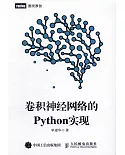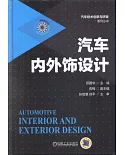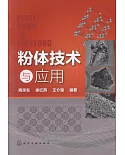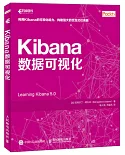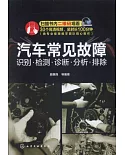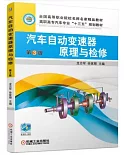內容簡介
本書主要介紹港口規劃與布置所涉及的港口營運、港口規劃調查及分析、碼頭及水域布置、陸域設施、港口發展規劃以及環境評價與環境保護等問題。它可作為港口航道與海岸工程專業本科生英文版教科書,亦可作為土木、水利、交通運輸類專業的港口課程英文版教材。對從事港口規劃、建設、技術管理和港口經營以及從事交通運輸綜合管理的工程師、經濟師們,也是一本有益的專業英文參考書。
目錄
1 INTRODUCTION
1.1 The important role of modern ports
1.2 Port and its main components
1.3 Functions of modern ports
1.4 Classification of Ports
1.5 General information on port development
2 PORT OPERATION AND SHIPS
2.1 Cargoes
2.1.1 Classification of cargoes
2.1.2 Workings of cargoes inside the ports
2.2 Port hinterland and port throughput
2.2.1 Port hinterland and foreland
2.2.2 Port throughput
2.3 Forecast of port throughput
2.3.1 Introduction
2.3.2 Delphi Forecasting
2.3.3 Time series forecasting
2.3.4 Grey Prediction
2.4 Ships
2.4.1 Introduction
2.4.2 Shipboard measurement
2.4.3 Ship types
2.4.4 The development of maritime ship
2.4.5 Shipping services and networks
3 INVESTIGATION AND ANALYSIS FOR PORT PLANNING
3.1 Meteorological conditions
3.1.1 Wind
3.1.2 Rain and Fog
3.1.3 Ice
3.2 Oceanographic conditions
3.2.1 Tide
3.2.2 Waves
3.2.3 Currents
3.3 Estuary conditions
4 TERMINAL AND LAYOUT OF QUAYSIDE
4.1 Classification of terminals
4.1.1 By the function
4 1.2 By the layout
4.2 Scale of terminals
4.3 Determination of the optimum berth number
4.3.1 The calculation of optimum berth number
4.3.2 The application of queuing theory
4.4 Some suggestions for port operation management
4.4.1 Berth group
4.4.2 Handling productivity
4.4.3 The timing for increasing port capacity
4.5 Determination of berth scale
4.6 Typical layout for general cargo terminal
4.7 Typical layout for container terminal
4.7.1 Layout for container terminal water area
4.7 2 Layout for container terminal land area
4.8 Typical layout for dry bulk terminal
4.9 Typical layout for Ro/Ro berth
4.10 Typical layout for oil term nal
4.11 Typical layout for LPG/LNG terminal
4.12 Determination of berth surface elevation
5 HARBOR AND BREAKWATER
5.1 Introduction
5.2 Water depth
5.2.1 Components of water depth clearance and determinants
5.2.2 Water depth in berthing area
5.2.3 Water depth in approach channel
5.3 Channels
5.3.1 Channel Alignment
5.3.2 Channel width
5.4 Anchorage area and turning area
5.5 Standards for harbor tranquility
5.6 Layout of breakwater
5.7 Aids to navigation
6 LANDSIDE FACILITIES
6.1 Port railway
6.2 Road
6.3 Other facilities of port
7 PORT DEVELOPMENT PLANNING
7.1 Port planning process
7.1.1 Primary planning
7.1.2 The port distribution planning
7.1.3 The general port planning
7.1.4 The port area planning
7.2 Port demand forecasting
7.3 Port site selection
7.3.1 The port location
7.3.2 The basic types of the port arrangement
7.3.3 The basic requirement for the port site selection
7.3.4 The port area and the urban area
7.4 Port zoning
7.4.1 Port zoning strategy
7.4.2 Port zoning procedure
7.5 Port financial evaluation
8 PORT ENVIRONMENT ASSESSMENT AND PRO1 ECTION
8.1 General introduction
8.2 Port environmental impact assessment
8.2.1 EIA of port construction projects
8.2.2 Environmental impact assessment of port planning
8.3 Environmental protection of domain coast
8.3.1 Domain coast environmental protect on
8.3.2 Ecological environment protection
9 CHARACTERISTICS OF INLAND RIVER PORTS
9.1 Introduction
9.2 Site selection
9.3 Terminals facilities
9.4 Layout of Inland River Port
9.4.1 Terminal surface and bottom elevation
9.4.2 Layout of the berth line
Appendix A Introduction to EDI
Appendix B A Note on Queuing Theory
Appendix C Logistics and Route Selection
Appendix D Vessel Arrival and Berthing Time Distribution
Appendix E National Plan for Coastal Port
Appendix F Port of New York ant New Jersey
Appendix G Special Economic Zone, Free Trade Zone and Free Port
References
1.1 The important role of modern ports
1.2 Port and its main components
1.3 Functions of modern ports
1.4 Classification of Ports
1.5 General information on port development
2 PORT OPERATION AND SHIPS
2.1 Cargoes
2.1.1 Classification of cargoes
2.1.2 Workings of cargoes inside the ports
2.2 Port hinterland and port throughput
2.2.1 Port hinterland and foreland
2.2.2 Port throughput
2.3 Forecast of port throughput
2.3.1 Introduction
2.3.2 Delphi Forecasting
2.3.3 Time series forecasting
2.3.4 Grey Prediction
2.4 Ships
2.4.1 Introduction
2.4.2 Shipboard measurement
2.4.3 Ship types
2.4.4 The development of maritime ship
2.4.5 Shipping services and networks
3 INVESTIGATION AND ANALYSIS FOR PORT PLANNING
3.1 Meteorological conditions
3.1.1 Wind
3.1.2 Rain and Fog
3.1.3 Ice
3.2 Oceanographic conditions
3.2.1 Tide
3.2.2 Waves
3.2.3 Currents
3.3 Estuary conditions
4 TERMINAL AND LAYOUT OF QUAYSIDE
4.1 Classification of terminals
4.1.1 By the function
4 1.2 By the layout
4.2 Scale of terminals
4.3 Determination of the optimum berth number
4.3.1 The calculation of optimum berth number
4.3.2 The application of queuing theory
4.4 Some suggestions for port operation management
4.4.1 Berth group
4.4.2 Handling productivity
4.4.3 The timing for increasing port capacity
4.5 Determination of berth scale
4.6 Typical layout for general cargo terminal
4.7 Typical layout for container terminal
4.7.1 Layout for container terminal water area
4.7 2 Layout for container terminal land area
4.8 Typical layout for dry bulk terminal
4.9 Typical layout for Ro/Ro berth
4.10 Typical layout for oil term nal
4.11 Typical layout for LPG/LNG terminal
4.12 Determination of berth surface elevation
5 HARBOR AND BREAKWATER
5.1 Introduction
5.2 Water depth
5.2.1 Components of water depth clearance and determinants
5.2.2 Water depth in berthing area
5.2.3 Water depth in approach channel
5.3 Channels
5.3.1 Channel Alignment
5.3.2 Channel width
5.4 Anchorage area and turning area
5.5 Standards for harbor tranquility
5.6 Layout of breakwater
5.7 Aids to navigation
6 LANDSIDE FACILITIES
6.1 Port railway
6.2 Road
6.3 Other facilities of port
7 PORT DEVELOPMENT PLANNING
7.1 Port planning process
7.1.1 Primary planning
7.1.2 The port distribution planning
7.1.3 The general port planning
7.1.4 The port area planning
7.2 Port demand forecasting
7.3 Port site selection
7.3.1 The port location
7.3.2 The basic types of the port arrangement
7.3.3 The basic requirement for the port site selection
7.3.4 The port area and the urban area
7.4 Port zoning
7.4.1 Port zoning strategy
7.4.2 Port zoning procedure
7.5 Port financial evaluation
8 PORT ENVIRONMENT ASSESSMENT AND PRO1 ECTION
8.1 General introduction
8.2 Port environmental impact assessment
8.2.1 EIA of port construction projects
8.2.2 Environmental impact assessment of port planning
8.3 Environmental protection of domain coast
8.3.1 Domain coast environmental protect on
8.3.2 Ecological environment protection
9 CHARACTERISTICS OF INLAND RIVER PORTS
9.1 Introduction
9.2 Site selection
9.3 Terminals facilities
9.4 Layout of Inland River Port
9.4.1 Terminal surface and bottom elevation
9.4.2 Layout of the berth line
Appendix A Introduction to EDI
Appendix B A Note on Queuing Theory
Appendix C Logistics and Route Selection
Appendix D Vessel Arrival and Berthing Time Distribution
Appendix E National Plan for Coastal Port
Appendix F Port of New York ant New Jersey
Appendix G Special Economic Zone, Free Trade Zone and Free Port
References
序
港口是經濟全球化過程中十分寶貴的戰略資源,是在全球範圍內調動資源的物流平台。港口是促進國民經濟發展和優化產業布局,提高各國在經濟全球化中競爭力的重要基礎。《港口規劃與布置》是一本關于科學規劃和布置港口的專業書。
在經濟全球化背景下,各國之間的技術交流與合作頻繁。為了提高我國大學生和有關工程技術人員的英語交流能力,在參考了大量國外原版教材基礎上,結合我國實例,編寫這本英文版教材。
本書主要目的是介紹港口功能和生產運營的基本知識,闡述港口規劃與布置的基本原理和方法。全書采用洪承禮教授《港口規劃與布置》第二版的結構體系,第一部分是港口規劃與布置的基本教學內容,第二部分是附錄,供學生擴充知識知識領域時參考。在內容安排上,力求與港口發展的實際和現行規範餃接。重點加強了近年迅速發展的集裝箱、LDN/LPG碼頭、滾裝碼頭布置的介紹。在實例安排上,不僅密切聯系中國港口的實際,也適當安排了國外港口的典型例子,以擴大學生的視野。
本書第1,3,4章由陳一梅編寫,第2,9章及附錄A—F由廖鵬編寫,第5,6章由錢芳編寫,第7章及附錄G由嚴軍編寫,第8章由郝建新編寫。全書由陳一梅、廖鵬統編審定。在編寫過程中得到了河海大學張東生教授、魯子愛教授,東南大學蔣宗燕教授、徐宿東副教授的熱情幫助和支持,顧竣、杜烈武、林強、馬麗佳、沈旦等在本書編寫過程中參加了部分工作,在此一起表示真誠的感謝!
衷心感謝東南大學陳美華教授審閱英文書稿時所提出的寶貴意見。衷心感謝書中所引用參考文獻的各位作者。
由于水平所限,書中缺點和錯誤在所難免,敬請讀者批評指正。
在經濟全球化背景下,各國之間的技術交流與合作頻繁。為了提高我國大學生和有關工程技術人員的英語交流能力,在參考了大量國外原版教材基礎上,結合我國實例,編寫這本英文版教材。
本書主要目的是介紹港口功能和生產運營的基本知識,闡述港口規劃與布置的基本原理和方法。全書采用洪承禮教授《港口規劃與布置》第二版的結構體系,第一部分是港口規劃與布置的基本教學內容,第二部分是附錄,供學生擴充知識知識領域時參考。在內容安排上,力求與港口發展的實際和現行規範餃接。重點加強了近年迅速發展的集裝箱、LDN/LPG碼頭、滾裝碼頭布置的介紹。在實例安排上,不僅密切聯系中國港口的實際,也適當安排了國外港口的典型例子,以擴大學生的視野。
本書第1,3,4章由陳一梅編寫,第2,9章及附錄A—F由廖鵬編寫,第5,6章由錢芳編寫,第7章及附錄G由嚴軍編寫,第8章由郝建新編寫。全書由陳一梅、廖鵬統編審定。在編寫過程中得到了河海大學張東生教授、魯子愛教授,東南大學蔣宗燕教授、徐宿東副教授的熱情幫助和支持,顧竣、杜烈武、林強、馬麗佳、沈旦等在本書編寫過程中參加了部分工作,在此一起表示真誠的感謝!
衷心感謝東南大學陳美華教授審閱英文書稿時所提出的寶貴意見。衷心感謝書中所引用參考文獻的各位作者。
由于水平所限,書中缺點和錯誤在所難免,敬請讀者批評指正。
網路書店
類別
折扣
價格
-
新書87折$204











